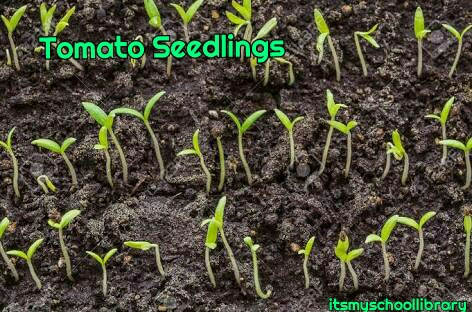Welcome! Our Agricultural Science Lessons Continues. Do have a great moment studying with us!
Lesson Note
Subject: Agricultural Science
Topic: Husbandry Of Selected Crops
Sub-Topic: Production of Tomato (Lycopersicon esculentum)
Lesson Objective: At the end of the lesson, learners should be able to explain the process involved in producing tomato.
Lesson Discussions
PRODUCTION OF TOMATO
Scientific Classification

Origin: Tomato originated from Tropical Central and South America.
Uses: It is used as a cooking paste, salad vegetable and for puree, juice manufacture and for canning and pickling.
Ecology: Tomatoes require well drained loamy soil that is rich in humus. Clayed and waterlogged soils limit tomato growth. It tolerates high temperature and humidity but does not stand prolonged hot, dry conditions. It also performs best when the soil pH is in the range of 6.0 – 7.0
Nursery-bed Preparation: Nursery may be prepared on the flat ground, or in portable boxes and baskets. Till the ground nursery to a depth of between 25 – 30cm with the upper 5cm being tilled to a fine tilth. When basket or box nursery is used, fill the containers with a germination mixture of top soil, humus and fine river sand in the ratio of 3:2:1. A gap of about 2cm is left between the soil level and the container to prevent the incidence of run-off and soil wash caused by irrigation water and also to protect the emerging seedlings against wind.

Sowing in the Nursery: Seeds may be broadcast or pressed carefully into the soil to a depth of 0.5 cm and at a spacing of about 2.5 cm × 2.5cm. In each case, the seeds are covered lightly with fine texture soil. Place the boxes or baskets in sheltered places and use palm fronts to provide shade for the ground nursery. The planted seeds/germinated seedlings are watered daily using cans with fine nozzles. The seedlings are hardened to reduce shock on them during transplanting and the hardening techniques include:
- (a) reducing the shading materials or exposing the seedlings to light
- (b) reducing the quantity of water supplied to the seedlings
- (c) pressing the soil around the seedlings so that the roots gather enough soil at transplanting.

Land Preparation: Tomato may be planted on ridges or on vegetative seed beds. Till the standard vegetable seed-bed of 7.62 × 1.22m very well and add about 3 – 4 headpans of well decomposed organic manure. Work in the manure and mulch properly.
Transplanting: Water the nursery and the vegetables seed-bed about one hour before transplanting. Transplant in the evening when the weather is cool. Pull out the seedlings carefully with a ball of earth and transplant to an already dug hole in the vegetative bed. Water the seedlings after transplanting and provide spot shading if necessary.
Planting Date: Tomato crop can be raised anytime of the year provided that there is adequate water regime. I remembered planting this one around October when the weather was a bit hot. But I had to make water available.
Spacing: The appropriate spacing depends on the cultivar and geographical location but is generally 45 – 60cm between rows and 30 – 40cm within rows.
Fertilizer Application: Apply 15:15:15 NPK fertilizer at 340 – 680kg/ha. Apply 75% of this fertilizer at transplanting and then 25% at initiation of flowering.
Weeding: Tomato does not tolerate weed competition. Therefore, weed as need arises.
Staking: Tomato plants should be staked to reduce wind damage and the incidence of pests and disease attack.

Irrigation: Regular watering should be provided especially during dry spells and the garden should be watered to field capacity.
Harvesting: Fruits mature and are ready for harvesting 2 – 3 months after sowing. Harvest when fruits are half ripe.
Storage: Tomatoes are best preserved in processed form but fresh dry fruits may store for a few days.
Pests: Tomato pests are grasshoppers, crickets, fruits worms and millipedes.
Diseases: The diseases of tomato include bacterial canker, root gall blossom end-rot and bacterial wilt.
Done studying? See all lessons in Agricultural science
Take a quick test for this lesson
Explain the process involved in producing tomato.
Question answered correctly? Bravo!!
Do stay connected to itsmyschoollibrary for more educational contents.
